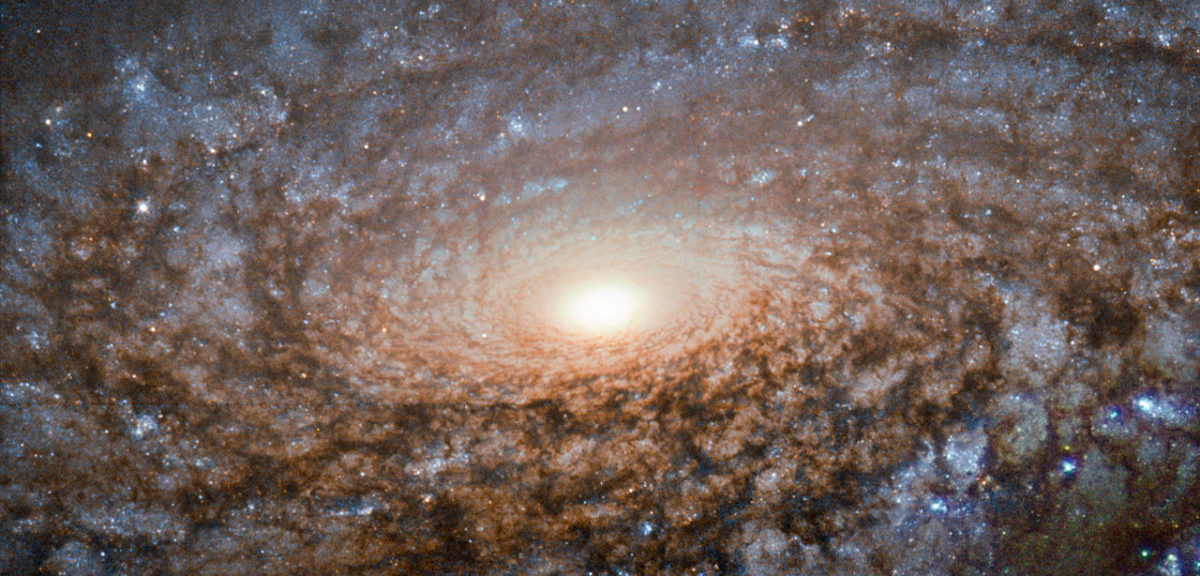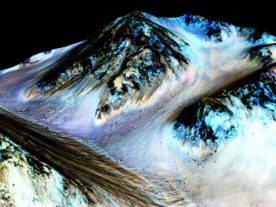
A new mosaic image captured by the NASA/ESA Hubble Space Telescope and released on 9/24/15 offers an incredibly detailed look at a small section of the remains of a massive star that exploded about 8,000 years ago. Called the Veil Nebula, it’s one of the best-known supernova remnants. The entire nebula is 110 light-years across and sits about 2,100 light-years away in the constellation Cygnus, the Swan. (NASA, ESA, and the Hubble Heritage Team (STScI/AURA))

A boy tries to talk to a humanoid robot during a science event in the Chinese province of Henan on 9/19/15. (Reuters)

This five frame composite silhouette of the International Space Station as it glides in front of the Sun was taken on 9/6/15 from Shenandoah National Park, Front Royal Virginia. As it passed the sun, the ISS was traveling at a speed of about 8 kilometers per second. (NASA/Bill Ingalls)

On 9/10/15, scientists in South Africa announced they had discovered a new human ancestor species. This is a composite skeleton and other fossil elements of what scientists call Homo naledi. The new hominid species shows a unique mix of human-like and more primitive characteristics. (AP)

This new image of the spiral galaxy NGC 3521 was captured by the NASA/ESA Hubble Space Telescope and released on 9/21/15. It’s a member of a class of galaxies known as flocculent spirals and is located almost 40 million light-years away in the constellation of Leo. (ESA/Hubble & NASA and S. Smartt (Queen’s University Belfast))

A worker for the Israel Antiquities Authority shows a cross that was designed on a mosaic floor of a Byzantine era burial site at Ben Shemen Forest on 9/21/15. Investigating archaeologists say it may have marked the burial spot of an important person. (AP)

With the Milky Way in the background, ISS crewmember Kjell Lingren grabbed this photo from space of a lightning strike on Earth that is so bright it lights up the space station’s solar panels. Lingren posted this photo on Twitter and Instagram on 9/2/15. (NASA)

A perigee full moon or supermoon is when a full moon makes its closest approach to Earth during its elliptical orbit. Skywatchers were treated to a rare combination supermoon and a total lunar eclipse on 9/27/15. Here’s a look at the supermoon behind an Orthodox church in Belarus as it nears the end of the eclipse. (AP)

This photo of the “Phoenix Cluster”, released on 9/30/15, is actually a composite of images taken at X-ray, optical, and ultraviolet wavelengths by NASA’s Chandra X-ray Observatory, the Hubble Space Telescope, and the Clay-Magellan telescope located in Chile. (NASA/CXC/MIT/M.McDonald et al; NASA/STScI; TIFR/GMRT)

Nate Mitchell, co-Founder and vice president of product at Oculus, can be seen in the lens of a new version of the company’s Gear VR virtual reality headset. The photo was taken on 9/24/15 at an event in Hollywood, CA. (Reuters)

NASA released this high-resolution enhanced color view of Pluto on 9/25/15. The image combines blue, red and infrared images taken by the Ralph/Multispectral Visual Imaging Camera (MVIC) on 7/14/15. (NASA/JHUAPL/SwRI)

Scientists from Oregon State University announced on 9/28/15 that this flea, preserved about 20 million years ago in amber, may carry evidence of an ancient strain of the bubonic plague. (George Poinar, Jr/Oregon State University)























Does the shadow of the earth always or sometimes pass across the moon in the opposite direction than reflected sunlight (moonshine) ?